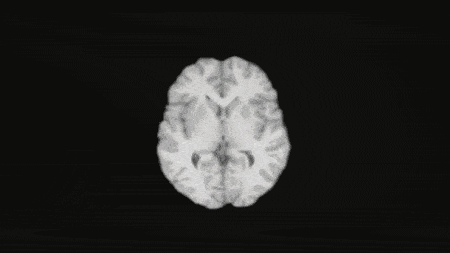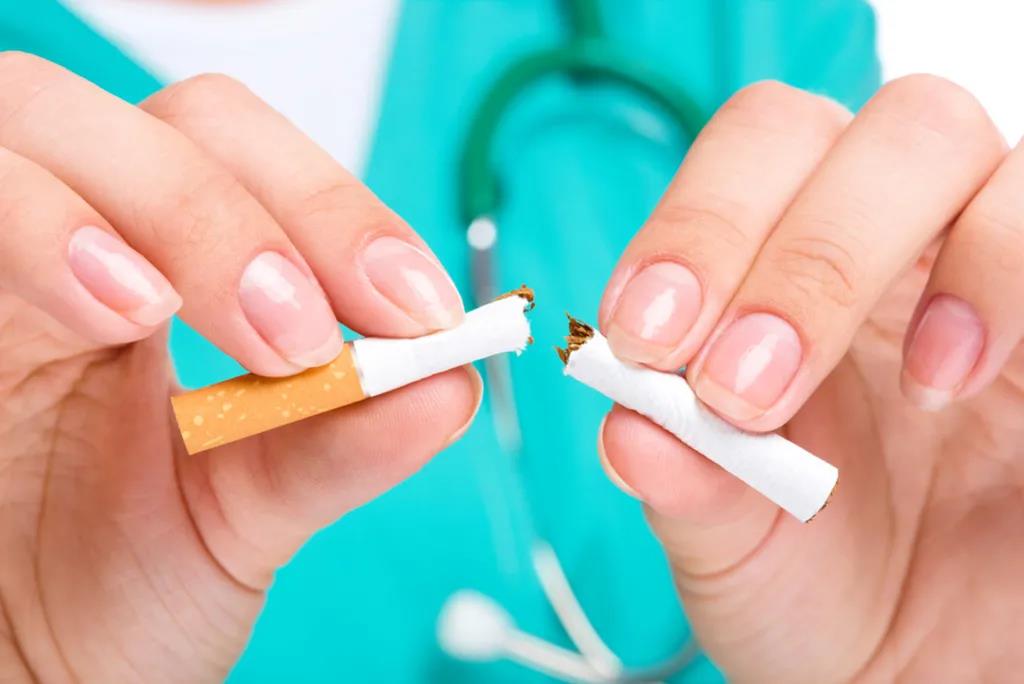
From lighting to burning, a cigarette can produce at least 4000 kinds of chemicals, of which 69 are identified as carcinogens.
Research published in the journal Lancet clinical medicine shows that quitting smoking early can keep away from 28 diseases such as myocardial infarction and lung cancer.
Many smokers have realized the harm of smoking and tried to quit smoking, but they often can’t stand all kinds of withdrawal reactions and fail repeatedly.
From a scientific point of view, gradually quitting smoking vs suddenly stopping smoking, which method has a higher success rate?

Gradually quit smoking vs stop smoking immediately, which one to choose?
Scientists from the University of Oxford and the University of Birmingham in the UK conducted a randomized controlled clinical trial to evaluate the smoking cessation effects of “gradual cessation” and “immediate cessation”.
The researchers included 697 smokers with a clear addiction and randomly divided them into two groups:
The first group is “stop smoking immediately group”, that is, quit smoking directly and completely from the beginning;
The other group gradually reduced the amount of smoking 2 weeks in advance, reduced to 1 / 2 of the original amount of smoking at the first weekend, reduced to 1 / 4 of the original amount of smoking at the second weekend, and then stopped smoking.
In addition, both groups of participants received the same behavior support treatment and short-acting nicotine replacement treatment to deal with the discomfort caused by quitting smoking and improve the success rate.

The research team compared the smoking cessation effects of participants at the 4th week, 8th week and 6th month after they completely quit smoking.
The criteria for evaluating the effect of quitting smoking include the oral statement of quitters and the concentration of carbon monoxide in the exhaled gas of quitters. The results show that:
At 4 weeks
39.2% of the “gradual reduction group” successfully quit smoking and did not relapse; 49% of the “immediate cessation group” successfully quit smoking and did not relapse.
At 8 weeks
The success rate of quitting smoking was 29.2% in the “gradual reduction group” and 36.6% in the “immediate cessation group”.
At 6 months
15.1% of the “gradual reduction group” successfully quit smoking and did not relapse, and 22% of the “immediate cessation group” successfully quit smoking and did not relapse.
The above three groups of data show that the success rate of quitting smoking in the “immediate cessation group” is higher than that in the “gradual reduction group”.
The conclusion is obvious: if you want to improve the success rate of quitting smoking, you’d better not smoke at all from the moment you decide to quit smoking.
Smoking addiction,
Chronic diseases recognized by WHO
Famous writer Mark Twain said, “it’s easy to quit smoking. I’ve quit dozens of times in my life.” A joke is enough to see how difficult it is to quit smoking.
Nicotine in tobacco is a highly addictive substance, which is an important reason for many “old smokers” to smoke for a long time.
After being inhaled into the human body, nicotine will enter the brain center with the blood within 10 seconds, stimulating the rapid and short-term release of dopamine.
Dopamine can make people feel happy. Once they stop taking nicotine, this effect will soon disappear, making smokers unable to continue to experience pleasure, and there will be withdrawal reaction and desire for smoking.
Therefore, smoking addicts smoke every other period of time to maintain nicotine levels in the brain.
■ it should be emphasized that smoking addiction (also known as tobacco dependence) is not a behavior habit, but a chronic disease. The World Health Organization has included it in the international classification of diseases, coded F17 2。
■ the study found that the brain structure and function of tobacco dependent patients will change, including atrophy of gray and white matter, abnormal neural activities in frontal, temporal and marginal lobes, and significant reduction of functional connections in insular related brain regions, which proves that the pathological location of this chronic disease is in the brain.

Tobacco dependence is divided into physical dependence and psychological dependence:
Physical dependence refers to a series of intolerable withdrawal symptoms, including irritability, anxiety, restlessness, headache, inattention, sleep disorder and so on.
Psychological dependence, also known as mental dependence, shows a strong subjective desire to smoke.
Physical dependence and psychological dependence cannot be completely separated, and often exist at the same time, which affects the success rate of quitting smoking.
“Withdrawal response” is the biggest obstacle
Quitting smoking is particularly difficult because of “withdrawal symptoms”.
Generally speaking, withdrawal reaction is a normal phenomenon in the process of quitting smoking. It usually begins to appear a few hours after stopping smoking. It is the strongest in the first 14 days of quitting smoking, and then gradually decreases until it disappears.
Therefore, it is easiest to relapse when you first quit smoking.
Most withdrawal symptoms last for about a month. During this period, some measures can be taken to help get through the most difficult stage.
How to deal with “withdrawal reaction”?
For example, when you feel nervous and irritable, take a deep breath or take a walk outdoors;
When you can’t concentrate, try to reduce the workload and take a break;
When you feel tired, you must ensure adequate sleep and take an appropriate nap at noon;
When you always want to eat, you can choose some fresh vegetables and fruits instead of high calorie snacks.

It should be noted that some people will relapse after quitting smoking for months or even years. Generally, they encounter inducing factors, such as high work pressure, sudden accidents at home, social gatherings, etc.
In such cases, we must firmly believe that quitting smoking is to say goodbye to smoking completely. We can’t touch a cigarette again, and we can’t take the chance of “it’s okay to take one or two breaths”;
Secondly, we should avoid the factors that induce smoking, stay away from other smokers, restrict drinking, etc;
Some compensatory behaviors can be used instead of smoking, such as drinking water, chewing sugar free gum, taking a walk, listening to music, etc.
In general, the duration of smoking craving will not be too long. As long as you stick to it for a few more minutes, you are likely to avoid a relapse.
Smoking cessation clinic can improve the success rate
Some smokers can rely on perseverance to quit smoking. For tobacco dependent patients, smoking cessation clinic is helpful to improve the success rate of smoking cessation.
Doctors will formulate personalized smoking cessation treatment plans according to the methods recommended in the clinical smoking cessation guidelines, including smoking cessation advice, smoking cessation drug treatment and other intervention methods.
Doctors will also regularly track and follow up smoking cessation to help solve the problems encountered in the process of quitting smoking.
Don’t be afraid of smoking cessation drugs. Smoking addiction is a chronic disease, and the use of drugs is a very formal method. There is sufficient evidence that smoking cessation drugs can alleviate withdrawal symptoms and improve the success rate of smoking cessation.

Whether they are “old smokers” or people who have been addicted for a short time, they need to do some preparatory work before quitting smoking to help them succeed in quitting smoking.
Set a smoking cessation day
You can choose an important day, such as festivals, birthdays, anniversaries, etc. from this day on, don’t smoke a cigarette.
Create an environment conducive to quitting smoking
Before the day of quitting smoking, dispose of all smoking related items around you, including cigarettes, lighters, ashtrays, etc. at home, in the car, in the office and with you, and try to create a smoke-free environment.
Review past smoking cessation experiences
If you have tried to quit smoking before, you can sum up your past experience and find out what is helpful to quit smoking and what is easy to lead to relapse.
Especially the problems or difficulties that may occur in the first few weeks, such as nicotine withdrawal symptoms, and make a response plan in advance.
Team up to quit smoking or find personal supervision
Tell your family, friends and colleagues that you have decided to quit smoking and get their understanding and support. In addition, smokers around should be encouraged to quit smoking together, at least not in front of themselves.
Write a letter of commitment
It is suggested to sign a letter of commitment to quit smoking with yourself or leave one for supporters to help get encouragement and supervision from others.
Once you start quitting smoking, you should stop smoking completely.
If you encounter difficulties in quitting smoking, you can go to the quitting clinic for medical treatment to find professional quitting guidance and treatment; You can also call the national professional smoking cessation hotline 400-808-5531 to get help.I
Comments